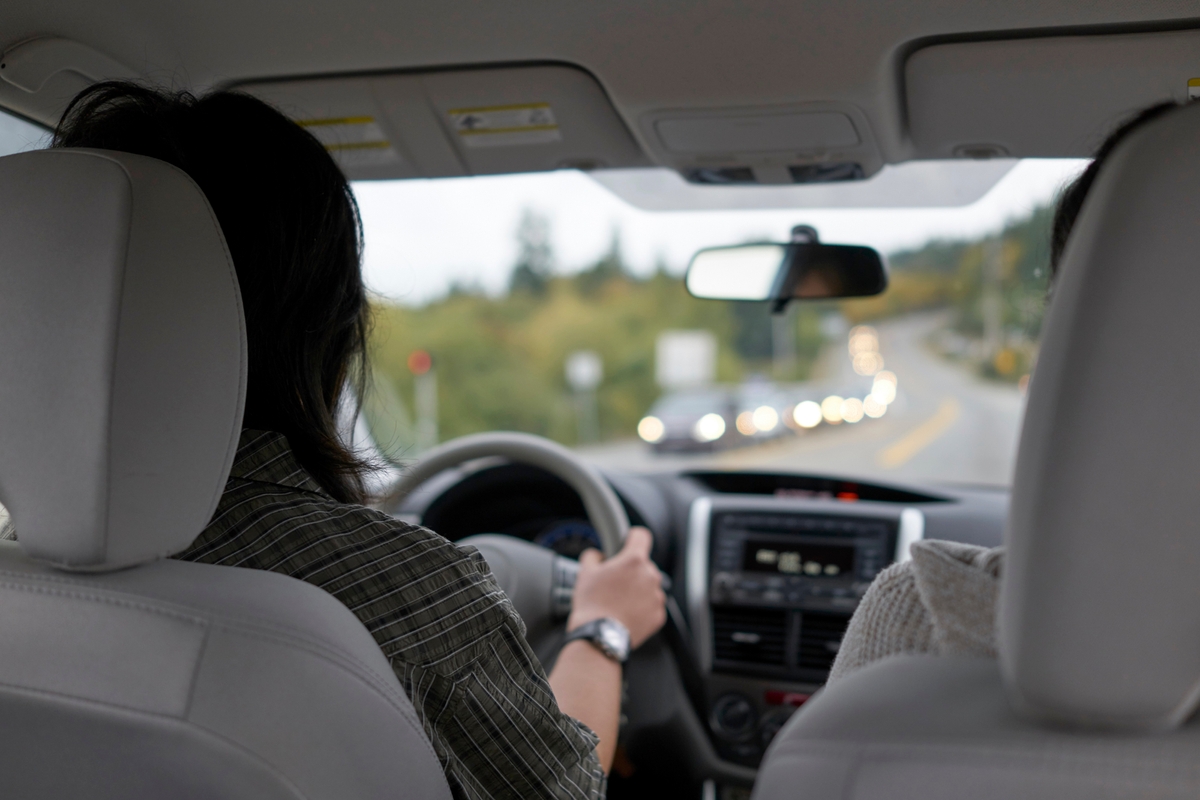
There’s no denying it: traffic stinks. For countless American workers, the daily commute is an unavoidable reality, and unfortunately, it’s often a source of immense stress. Sitting in bumper-to-bumper traffic day after day, sometimes for what feels like hours, can truly wear you down, leading to health problems and just downright ruining your mood before your day has even properly begun or ended.
But here’s the good news: your commute doesn’t have to be a daily dose of frustration. It’s entirely possible to reclaim this time, transforming it from a dreaded obligation into an opportunity for personal growth and peace. Imagine arriving at work feeling refreshed and ready, or heading home relaxed and content, rather than exhausted and agitated. The key lies in understanding that while you can’t always change external traffic conditions, you absolutely can change your approach to them.
We’re here to share a wealth of practical, actionable strategies that can fundamentally shift your commuting experience. These aren’t just minor tweaks; they are powerful tools and mindset adjustments designed to make your journey to and from work happier, healthier, and significantly less stressful. Let’s dive into how you can make the most of your daily journey and turn that challenging commute into a genuine asset for your well-being.

1. **Plan Ahead: Reduce Uncertainty and Anxiety**One of the most significant contributors to commute-related stress is uncertainty. The fear of unexpected delays, sudden route changes, or overcrowded public transportation can leave anyone feeling a distinct lack of control. This feeling can set the tone for your entire day, but it doesn’t have to. Proactive planning is your first and most powerful weapon against this kind of anxiety.
Begin by thoroughly researching your route. Don’t just stick to the first path Google Maps suggests; explore multiple alternatives. Tools like Google Maps, Waze, or Citymapper are invaluable for understanding potential bottlenecks, predicting traffic patterns, and identifying routes that might be less prone to sudden slowdowns. Familiarizing yourself with these options before you even get in the car or leave the house gives you a sense of mastery over your journey.
Beyond just the route, it’s crucial to set realistic timeframes for your travel. Consistently giving yourself a little extra time – say, half an hour earlier or later than you think you need – creates a vital buffer against unexpected delays. This buffer alleviates the pressure to rush, which is a massive stress trigger. Knowing you have ample time allows for a calmer, more controlled journey, even if you encounter a minor setback.
Finally, make it a habit to check real-time updates before and during your commute. Many transportation apps offer live information on traffic, public transit delays, and road conditions. By staying informed, you can adjust your plans on the fly, perhaps choosing an alternative route or mode of transport if a major incident occurs. This simple step can prevent a minor issue from snowballing into a major source of stress, keeping you in the driver’s seat of your commuting experience.
2. **Adopt a Mindful Approach: Transform Your Commute into a Mental Break**For many, the daily commute is perceived as nothing more than a tedious chore, a block of unproductive time to be endured. However, with a simple shift in perspective and the adoption of a mindful approach, you can actually transform your daily journey into a valuable opportunity for relaxation and mental renewal. This isn’t about ignoring external stressors, but rather changing how you internalize and react to them.
Embrace the practice of mindfulness during your commute. Instead of letting your mind race with worries about the day ahead or regrets from the past, focus on the present moment. Pay close attention to your breathing – the simple act of inhaling and exhaling can be a powerful anchor. Notice the sensations of movement, the texture of the seat beneath you, or the sights and sounds around you, without judgment. This practice actively calms your mind and significantly reduces stress, allowing you to create a mental buffer between home and work.
Use your commute as a dedicated time to engage in truly relaxing activities. This could mean curating a playlist of calming music that soothes your nerves, diving into an engaging podcast that transports you, or losing yourself in an audiobook. If you’re driving, select audio content that promotes relaxation without distracting from the task of driving safely. The goal is to fill your mental space with positive, enriching input, rather than letting it be consumed by traffic frustrations.
Crucially, make a conscious effort to limit digital distractions. While it’s incredibly tempting to check emails, scroll through social media, or engage in other digital tasks during your commute, this often increases stress levels by keeping your mind in a state of constant stimulation and obligation. Instead, view your commute as a precious opportunity to disconnect from digital demands, allowing yourself to truly recharge and be present. This digital detox can leave you feeling surprisingly refreshed and mentally clearer upon arrival.
Read more about: Navigating Rainy Roads: Identifying and Avoiding the Most Common Driving Mistakes
.jpeg)
3. **Optimize Your Environment: Create a Comfortable Space**Your physical surroundings play an often-underestimated yet critical role in shaping your commuting experience. A chaotic or uncomfortable environment can amplify stress, while an optimized space can contribute immensely to your sense of calm and well-being. Taking a few proactive steps to enhance your immediate environment can make a world of difference.
Start by personalizing your vehicle or workspace within public transport. If you’re driving, ensure your car is customized for comfort: adjust your seat to an ergonomic position, set the climate control to your preferred temperature, and keep the interior clean and clutter-free. For those using public transportation, a simple addition like a comfortable cushion or a small blanket can significantly enhance your comfort, making the journey feel more like a personal haven than a crowded transit.
Managing noise levels is another key strategy. Unwanted sounds, whether it’s incessant honking, loud conversations, or the general din of public transport, can quickly raise stress levels. Investing in quality noise-canceling headphones or even simple earplugs can create a serene, personal bubble. This allows you to immerse yourself in your chosen calming audio – be it music, a podcast, or silence – and mentally detach from the surrounding chaos, fostering a much more peaceful atmosphere.
Finally, maintain a sense of organization within your commuting space. A cluttered car or a disorganized bag on public transport can subtly contribute to feelings of chaos and an overarching sense of stress. By keeping your belongings tidy, easily accessible, and within reach, you create an environment that feels more in control and less overwhelming. This small act of orderliness can translate into a greater sense of calm, ensuring that your physical space actively supports a stress-free journey.
Read more about: 14 Driving Pro Tricks: Stay Alert on Long Drives—Simple Habits That Prevent Fatigue
4. **Incorporate Physical Activity: Turn Your Commute into a Workout**For many, commuting is a predominantly sedentary activity, often contributing to a general lack of exercise and overall fatigue. This immobility can exacerbate stress and negatively impact both physical and mental health. However, by strategically integrating physical activity into your daily journey, you can transform your commute into a beneficial workout, not only reducing stress but also significantly boosting your health and energy levels.
If your route and circumstances permit, consider walking or cycling part or all of your commute. These activities are incredibly effective stress-busters, promoting physical fitness while releasing endorphins that naturally elevate your mood. Beyond the personal health benefits, walking or cycling provides a satisfying sense of accomplishment and is an environmentally friendly choice, often saving money on transportation costs. It’s a win-win situation for your body, mind, and wallet.
Even if you rely on public transportation, you can still seize opportunities for physical activity. Instead of driving directly to the station, try walking or biking that leg of the journey. This small addition to your routine can significantly increase your daily step count and provide a refreshing burst of movement. Think of it as a bonus workout built right into your day, making your commute feel productive in more ways than one.
And for those unavoidable periods of sitting, whether driving or on a bus, remember to take short breaks to stretch. Simple movements for your legs, neck, and shoulders can work wonders in relieving tension that accumulates from prolonged sitting. These micro-breaks improve circulation and prevent stiffness, ensuring that even within a sedentary commute, you’re actively caring for your body. Consider changing into sneakers or more comfortable clothing for your commute to encourage these active moments.

5. **Develop a Positive Mindset: Reframe Your Commute as a Personal Time**The lens through which you view your daily commute profoundly influences your experience. If you approach it as an unavoidable burden, it will undoubtedly feel that way. However, by consciously reframing your journey as a valuable period of personal time, you can cultivate a far more positive mindset, effectively reducing stress and enhancing your overall well-being. It’s about taking ownership of those minutes and making them work for you.
Use your commute as an intentional opportunity to set intentions or goals for the day ahead. Instead of dreading what’s to come, reflect on what you wish to accomplish, how you want to show up, and how you plan to approach any challenges with a positive attitude. This proactive mental exercise transforms your travel time into a powerful launchpad for a successful day, aligning your focus and energy before you even step foot in the office.
Cultivating gratitude during your journey can dramatically shift your perspective. Take a few moments to genuinely appreciate the small things around you. Perhaps it’s the beauty of the sunrise, the efficient rhythm of fellow commuters, or simply the fact that you have a safe means of transportation. This practice of acknowledging what you’re thankful for helps to quiet negative thoughts and fosters a sense of contentment, improving your mood and reducing feelings of frustration.
Finally, embrace flexibility and acknowledge that commuting inherently involves unpredictability. Instead of resisting delays or unexpected changes, view them as opportunities to practice adaptability and patience. By accepting that some things are beyond your control, you release the resistance that often fuels stress. This mental embrace of change allows you to find a deeper sense of peace in the moment, making unexpected twists in your journey far less unsettling.

6. **Seek Social Connections: Build Relationships During Your Commute**Human connection is a potent antidote to stress, and it can significantly enhance your overall well-being. While your commute might not seem like the most obvious setting for fostering relationships, there are tangible opportunities to build connections and cultivate a sense of community that can make your journey more enjoyable and less isolating. Don’t underestimate the power of shared experience.
Exploring options like joining a commuting group or a carpool can provide a consistent source of social connection. Sharing the ride with others not only builds a sense of community and makes the commute more enjoyable, but it also offers practical benefits. Carpooling can significantly reduce transportation costs, ease the burden of driving, and lessen your environmental impact. It turns a solo grind into a shared, often more pleasant, experience.
Furthermore, if your commute takes you through areas where community initiatives or volunteering opportunities are visible, consider getting involved. Even a small commitment can provide a profound sense of purpose and fulfillment. This engagement can broaden your perspective, connect you with your local community, and add a meaningful dimension to your daily travel, turning a potentially mundane journey into a path of positive contribution.
Read more about: Erika Eleniak’s Enduring Journey: From ‘Baywatch’ Icon to a Life Defined by Resilience and Reinvention

7. **Leverage Technology: Invest in Tools to Enhance Your Commute**In today’s fast-paced world, technology isn’t just a distraction; it’s a powerful ally in your quest for a stress-free commute. Smart tools and applications can dramatically streamline your journey, helping you navigate challenges, make informed decisions, and even boost your productivity on the go. Embracing these digital aids means taking proactive steps to transform potential frustration into efficiency and calm.
One of the most immediate benefits of technology lies in navigation. Apps like Google Maps, Waze, and Citymapper are more than just route planners; they are real-time command centers for your journey. These sophisticated tools provide instant traffic updates, suggest alternative routes to bypass congestion, and offer accurate estimated travel times, allowing you to react swiftly to unexpected delays and avoid frustrating bottlenecks. By staying informed, you gain a vital sense of control over your commute, turning potential surprises into manageable detours.
Beyond navigation, your smartphone can become a hub for productive engagement. If you’re looking to use your commute time more effectively, consider downloading a range of productivity apps. Whether your goal is to master a new language with Duolingo, unwind with a guided meditation app, or immerse yourself in compelling stories via a podcast platform, these tools can help you make the most of your time. This transforms otherwise idle minutes into opportunities for personal growth or mental relaxation, turning your commute into a valuable segment of your day.
Don’t overlook the power of smart devices to further enhance your commuting experience. Devices like smartwatches and fitness trackers can help you monitor your health and ensure you’re incorporating movement into your day, even subtly. Crucially, quality noise-canceling headphones can be a game-changer, creating a serene, personal bubble amidst the din of public transport or the drone of traffic. They allow you to immerse yourself in your chosen calming audio – be it music, an audiobook, or silence – effectively detaching you from external stressors and fostering a much more peaceful atmosphere.

8. **Consider Alternative Commuting Options: Explore New Ways to Travel**If your current commuting routine consistently leaves you feeling overwhelmed and stressed, it might be time to think outside the box. A truly stress-free commute might not just be about managing your current journey, but about reimagining it entirely. Exploring alternative ways to travel can unlock significant reductions in daily frustration and lead to a more balanced, enjoyable routine.
For some, the ultimate stress reduction comes from eliminating the commute altogether. If your role allows, consider discussing remote work options or adjusting your work schedule with your employer. Working remotely, even for a few days a week, can provide a significant reduction in commute-related stress and dramatically improve your work-life balance. Similarly, flexible working hours that allow you to avoid peak rush hour traffic can turn a grueling journey into a far more pleasant one, offering a simple yet powerful shift.
Beyond fully remote options, actively exploring different modes of transportation can be transformative. If driving solo is the source of your stress, why not consider carpooling with a colleague or friend? Sharing the ride not only provides social connection, which we covered earlier, but it also reduces the burden of driving, lessens your environmental impact, and often cuts down on fuel costs. For those with suitable routes, walking or cycling part or all of your commute, as previously discussed, offers a fantastic way to blend physical activity with transportation, boosting both mood and health.
In situations where long-term commuting is a persistent issue, a more profound change might be necessary. While a significant decision, relocating closer to your workplace or actively seeking a job with a shorter commute could be a viable solution. This kind of shift requires careful consideration, but it has the potential to lead to a long-term, fundamental reduction in daily stress and a substantial improvement in your overall quality of life. Sometimes, the best hack is to change the game entirely.

9. **Prioritize Self-Care: Nurture Your Well-Being on the Go**Commuting, especially when it’s long or challenging, can take a real toll on both your physical and mental health. Ignoring your well-being during this daily ritual only amplifies stress, setting a negative tone for your day. Actively prioritizing self-care throughout your commute is not a luxury; it’s a non-negotiable strategy for enhancing your resilience, reducing tension, and ensuring you arrive at your destination feeling your best.
One of the most fundamental aspects of self-care on the go is staying properly hydrated and nourished. Instead of reaching for sugary drinks or processed snacks that lead to energy crashes, make it a habit to bring a water bottle and healthy snacks with you. Keeping yourself hydrated and energized with nutrient-rich options like fruit or nuts helps maintain steady blood sugar levels, preventing the irritability and fatigue that can heighten commute stress. This simple preparation prevents an energy slump from compounding the day’s frustrations.
Crucially, self-care begins before you even leave the house: ensure you’re getting adequate rest. Traffic is always frustrating, but it becomes especially challenging when you’re low on energy and already feeling drained. A well-rested body and mind are far better equipped to handle the unexpected challenges of commuting, from sudden traffic jams to rude drivers. Prioritizing lots of sleep ensures you hit the road feeling refreshed and ready, making you more patient and less susceptible to stress.
Don’t be afraid to incorporate small, revitalizing breaks into your commute, especially if it’s a long or particularly stressful one. Consider stopping for a short walk, stepping out of your vehicle for a few minutes to breathe fresh air, or simply taking a moment to stretch your legs, neck, and shoulders. These micro-breaks are incredibly effective for relieving accumulated tension and improving circulation. You might even consider simple additions like supplements or relaxing air fresheners in your car to create a more soothing environment, transforming your travel time into a small, intentional self-care ritual.
10. **Engage in Productive Listening: Turn Travel Time into Learning and Enjoyment**For many, the commute is a block of “dead time,” something to be endured. But what if you could transform those minutes – or even hours – into a dynamic opportunity for personal enrichment, learning, and genuine enjoyment? By intentionally engaging in productive listening, you can reclaim your commute, making it a valuable extension of your personal and professional development, rather than just a journey from point A to point B.
One of the easiest ways to start is by curating your audio entertainment. Ditch the static of the morning show or the same old playlists and instead dive into a world of new music or captivating podcasts. There are countless podcasts available, from educational series on history, science, or current events, to engaging storytelling, comedy, or true crime. These can not only make your commute more bearable but also actively perk you up, setting a positive tone for your day or helping you wind down effectively. It’s about feeding your mind with stimulating or relaxing content, not just background noise.
Beyond entertainment, your commute is an ideal time to invest in continuous learning. Imagine learning a new language, taking an online course, or listening to university lectures, all while you’re on the road or public transport. Resources like Duolingo, Open Education Database, and iTunes U offer a wealth of free audio downloads and courses covering everything from Spanish to science. This transforms your car or train into a mobile classroom, allowing you to acquire new skills or expand your knowledge without having to carve out extra time in your already busy schedule.
Audiobooks are another fantastic way to make your commute productive and enjoyable. Whether you prefer classic literature, contemporary novels, or insightful non-fiction, listening to a book allows you to escape into a story or gain new perspectives, all while keeping your eyes safely on the road or observing your surroundings on public transit. Libraries often offer free audiobooks through services like OverDrive, or you can explore subscription options like Audible. These auditory adventures turn tedious journeys into anticipated moments, enriching your daily routine in a meaningful way.

11. **Practice Defensive Driving: Drive Safely and Reduce Frustration**Let’s be honest: traffic can bring out the worst in us. The stress of aggressive drivers, sudden stops, and constant delays can easily lead to frustration and even unsafe driving habits. However, mastering defensive driving techniques isn’t just about protecting yourself and others; it’s a powerful strategy for significantly reducing your own stress levels. By taking control of your reactions and prioritizing safety, you create a calmer, more predictable commuting experience.
Defensive driving fundamentally shifts your mindset from reacting emotionally to traffic conditions to proactively managing them. One of the core tenets is making peace with the inevitable. Understand that stop-and-go traffic and rude drivers are simply part of the daily commuting landscape. Instead of letting these external factors derail your mood, change your mindset and accept that some things are beyond your immediate control. This acceptance reduces the internal resistance that often fuels frustration, allowing you to remain calmer even when the road gets chaotic.
Practicing patience and maintaining ample following distance are key components. Aggressive driving – tailgating, sudden lane changes, or speeding – might feel like it saves time, but it dramatically increases stress and the risk of accidents. Instead, “take it easy, drive safely,” as the experts advise. Allow extra space between your vehicle and others, anticipate potential hazards, and be prepared to react smoothly. This creates a buffer zone that not only enhances safety but also gives you more time to react, preventing those sudden, heart-racing moments of near-misses that cause so much stress.
Furthermore, defensive driving involves being highly aware of your surroundings and the actions of other drivers. This means avoiding distractions in your own vehicle and constantly scanning the road ahead, to the sides, and behind you. By anticipating potential aggressive moves from other motorists or unexpected obstacles, you can adjust your driving proactively, rather than reactively. This enhanced awareness and preparedness are incredibly empowering, fostering a sense of control and significantly contributing to a less frustrating and ultimately safer journey for everyone on the road.
Read more about: Driving Expert’s ‘Clever’ Hack: Stop Tailgaters Safely Without Ever Touching Your Brakes

12. **Reflect and Adjust: Continuously Improve Your Commuting Experience**Transforming your commute from a daily stressor into a positive part of your routine isn’t a one-time fix; it’s an ongoing process of experimentation, learning, and refinement. The most effective strategies are those that are continuously evaluated and adapted to your changing needs and external circumstances. By embracing a mindset of continuous reflection and adjustment, you empower yourself to consistently improve your commuting experience.
A highly effective way to track your progress and identify areas for improvement is to keep a commuting journal. This isn’t just about logging your travel times; it’s about noting your experiences, the challenges you faced, and the strategies that worked well on a particular day. By writing down your observations, you can identify patterns, understand what triggers your stress, and track the effectiveness of different approaches. This personal data becomes an invaluable resource, helping you make informed decisions about how to fine-tune your routine for maximum benefit.
Don’t be afraid to experiment with new strategies. The world of commuting solutions is vast, and what works for one person might not work for another, or what worked yesterday might not work today. Be open to trying a different route, adjusting your departure time by just 15 minutes, exploring a new podcast series, or even integrating a new mindfulness practice. Experimentation is the pathway to valuable insights, helping you discover what genuinely resonates with you and what brings the most peace and efficiency to your daily journey.
Finally, remember that seeking feedback, especially if you commute with others, can open doors to innovative solutions. Discussing your commuting experiences with carpool buddies, colleagues, or even family members can provide fresh perspectives and collaborative problem-solving opportunities. Perhaps someone has discovered a clever shortcut, a new app, or a different approach to dealing with traffic that you hadn’t considered. This shared wisdom and willingness to adapt, reflect, and adjust ensure that your quest for a stress-free commute remains a dynamic and progressively more successful endeavor.
You see? Your daily commute doesn’t have to be a source of dread. By applying these practical, actionable strategies – from proactive planning and mindful moments to leveraging technology and cultivating a positive mindset – you possess the power to reclaim this significant chunk of your day. It’s about making conscious choices, experimenting with what works best for you, and continuously refining your approach. Embrace these tools, and watch as your journey transforms from a frustrating obligation into a genuine opportunity for well-being, productivity, and peace. Happy commuting!



